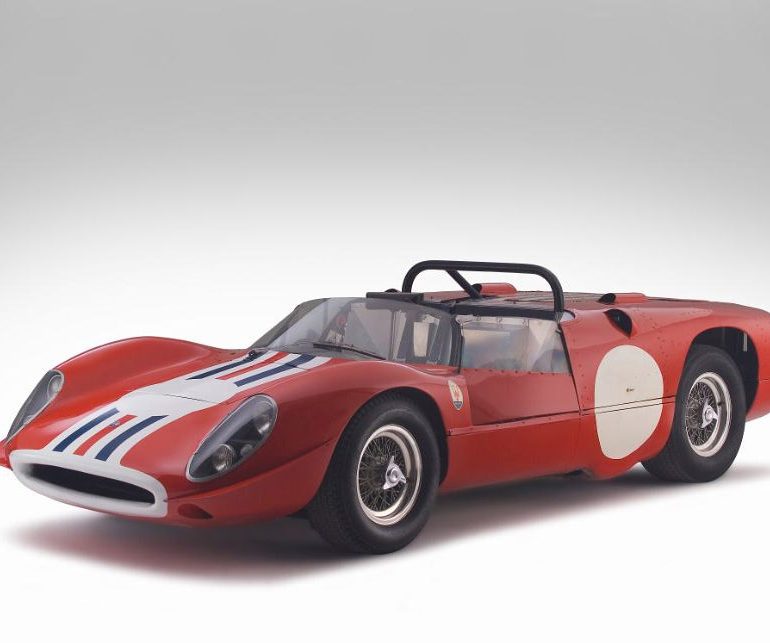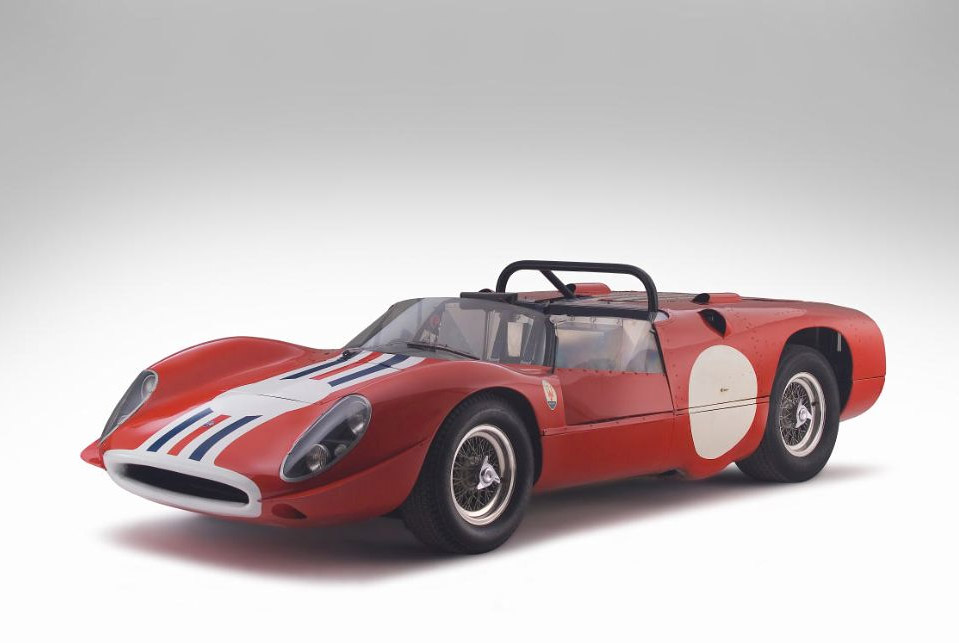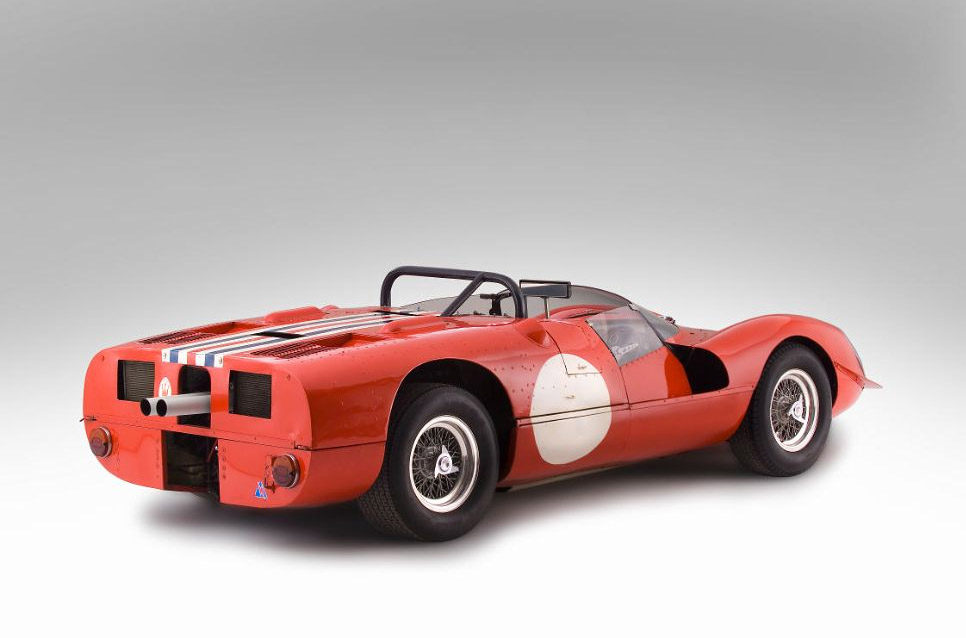1965 Maserati Tipo 65
After Maserati had almost given up on their Tipo 63 and Tipo 64 rear-engine prototypes, they gave the idea one last attempt for Le Mans in 1965. In less than 30 days the engineers at Maserati completed this special prototype at the request of Maserati France.
The project arose when Maserati France needed a car after Lucky Casner fatally crashed their only Tipo 151/4 at the Le Mans practice. With no cars available, Maserati designers Ing. Alfieri and Guiseppe Pelacani revisited the Birdcage program and resurrected a chassis that had been scrapped almost three years earlier.
In theory, the new car was much like its processor, the Tipo 63. Both shared the same ‘birdcage’ principle for their chassis including a complex network of thin tubes to support the running gear and aluminum body. However, the Tipo 65 was wider and heavier to support the Tipo 151/4’s spare V8 engine and wider tires.
The chassis itself was modified from a Tipo 63, probably chassis 63.008 which was in Maserati’s scrap heap. The chassis was split in two pieces: behind the cockpit, the design was entirely new to support the 5044cc V8 and torsion bar rear suspension. A pivoting rear hood was fabricated that gave the car considerable bulk. Overall the car was 420 kg heavier than the original Tipo 63.
Le Mans
With an unknown potential Maserati France showed up to Le Mans with their hastily made spyder. Team manager and owner John Simone organized drivers Joe Siffert and Jochen Neerpasch to drive the Tipo 65. It was up against the best that Ford and Ferrari had brought to the circuit.
Before the race, the drivers attained a lap time of 4’03”00 while the Tipo 151 from one year earlier was capable of 3’59”2. Despite a quite getwaway, Siffert hit the haybails ten minutes into the race and retired the car.
After LeMans the car was repaired, but didn’t leave the factory until 1967. This was partly due to Tipo 65’s weight and the new 750 kg formulae introduced for the 1966 Le Mans. With a new nose, rear coil-spring suspension the car was purchased for use in the European CanAm series, however that never materialized. Instead the car was sent to Modena, where it was modified in Piere Drogo’s workshop to include twin front headlights, a new dashboard and new air scoops. It was raced briefly in the seventies like this until it found a home at the Rosso Bianco Museum in Germany.
Story by RIchard Owen
In Detail
| tags | birdcage |
| submitted by | Richard Owen |
| type | Racing Car |
| released at | 1965 24 Hours of Le Mans |
| engineers | Alfieri Maserati, Guiseppe Pelacani |
| production | 1 |
| engine | Twin Spark V8 |
| fuel feed | Lucas Injection |
| displacement | 5044 cc / 307.80 in³ |
| bore | 95.1 mm / 3.7 in |
| stroke | 89 mm / 3.5 in |
| compression | 9.0:1 |
| power | 320.7 kw / 430 bhp @ 7000 rpm |
| specific output | 85.25 bhp per litre |
| bhp/weight | 358.93 bhp per tonne |
| wheel type | 15-Inch Borrani |
| front tires | 6.00×15 Dunlop |
| rear tires | 6.50×15 Dunlop |
| front brakes | Girling Discs |
| rear brakes | Inboard Girling Discs |
| steering | Rack & Pinion |
| f suspension | Double Wishbones |
| r suspension | Torsion Bars |
| curb weight | 1198 kg / 2642 lbs |
| wheelbase | 2385 mm / 93.9 in |
| front track | 1400 mm / 55.1 in |
| rear track | 1370 mm / 53.9 in |
| length | 4100 mm / 161.4 in |
| width | 1600 mm / 63.0 in |
| height | 1000 mm / 39.4 in |
| transmission | 5-Speed Manual |
| top speed | ~308.93 kph / 192 mph |
| fuel capacity | 154 litres or 40.66 gal. |






